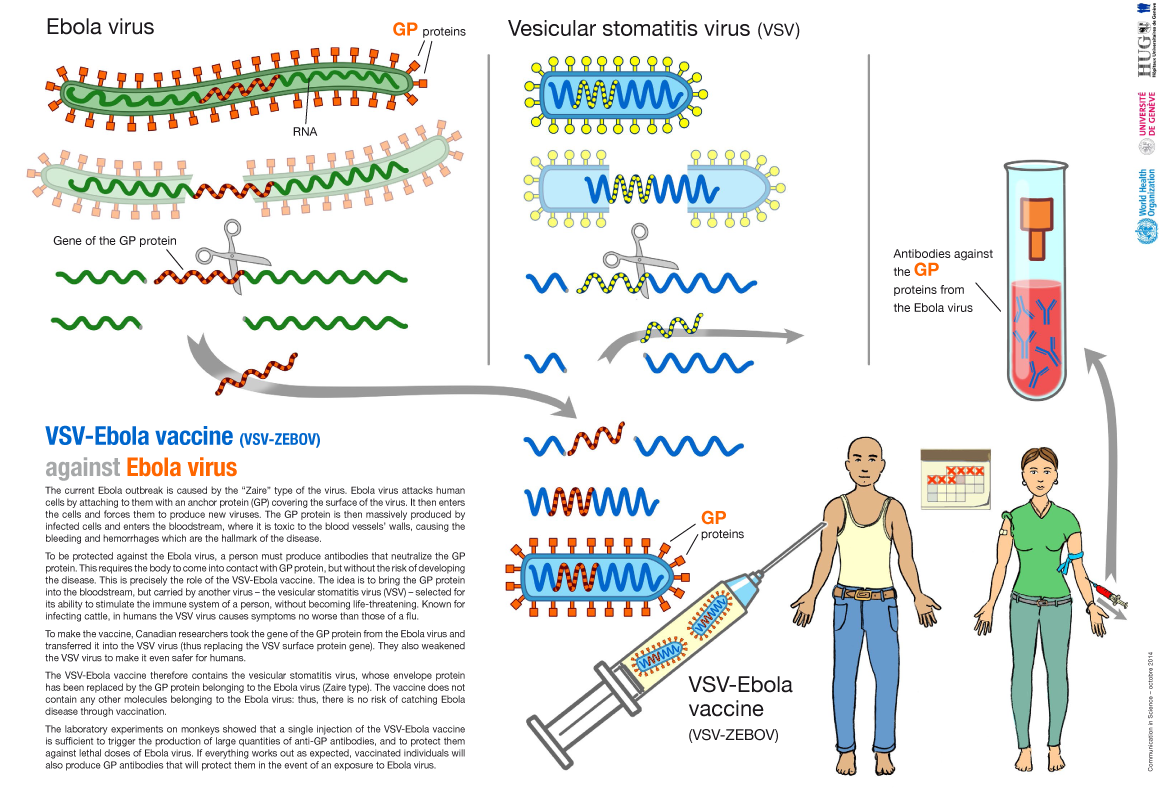
Ebola has been on the public health radar for quite some time. However, the most recent epidemic, the deadliest since the disease was identified in 1976, has brought the aggressively contagious viral illness to the forefront. Researchers from all over the world have been frantically trying to find a cure. Now there appears to be a breakthrough in the form of a safe vaccine that in initial trials has proven to be extremely effective in eliminating the risk of contracting the dreaded disease.
Developed by researchers at the Public Health Agency of Canada's National Microbiology Laboratory, the VSV-EBOV vaccine is currently in the midst of a massive Phase III study sponsored by the World Health Organization (WHO). It has thus far been administered in single-dose quantities to 7,651 residents in the three countries that are at the center of the recent outbreak: Guinea, Liberia, and Sierra Leone.

New vaccines are normally tested against placebos, or “fake cures” to determine if they work.
However, given the public alarm and swiftness with which Ebola can spread, researchers opted to test the effectiveness by applying the “ring" method.
Used in the fight against smallpox in the 1970’s, it is an attempt to curtail the virus by vaccinating the “ring” of people who have come in contact with an infected person.
In the Guinea trial that started in March, 4,000 recruited subjects were divided into two groups. Half were inoculated immediately after being exposed to the Ebola virus. The second group also received the vaccination, but after three weeks, the maximum period it takes for Ebola to incubate. The groups were then observed carefully for signs of the disease.
The first group had no cases of Ebola, which as the medical journal Lancet stated, makes the vaccine “100 percent effective” when administered immediately. The delayed group did not fare as well, with 16 people getting infected with the dreaded disease.
Experts believe the 100% effectiveness rate may be somewhat biased given the small size of the group, and that the real number may end up being somewhere between 75% to 100%. But that is enough to curb the current epidemic. It is no wonder that the WHO has authorized immediate immunization of anyone that is currently at risk. This includes adolescents aged 13 to 17, pregnant women, and possibly even children as young as 6.

So how exactly the vaccine work? VSV-EBOV vaccine is based on the vesicular stomatitis virus that mostly affects animals. However, it has been genetically engineered to look and act like the Ebola virus. Similar to all vaccines, VSV-EBOV is administered as a weaker form of the actual virus. This allows the immune system to build resistance against the disease, enabling it to fight it off if ever exposed again.

Ebola is a contagious viral disease known for its life-threatening symptoms and high mortality rate. It affects both humans and primates, such as monkeys, chimpanzees, and gorillas. This is not the first time African countries have experienced an Ebola outbreak. However, past epidemics have been quelled rapidly because they were primarily restricted to remote villages in Central Africa. This time around the disease spread to densely populated urban areas making it difficult to control. To make matters worse, it is caused by the Zaire ebolavirus, the deadliest of the five known strains of the disease. As of August, 11, almost 28,000 West African residents have been affected and over 11,000 have lost their lives. Hopefully, with this new vaccine, the world will soon be Ebola free!
Resources: cnn.com,livescience.com,wired.com